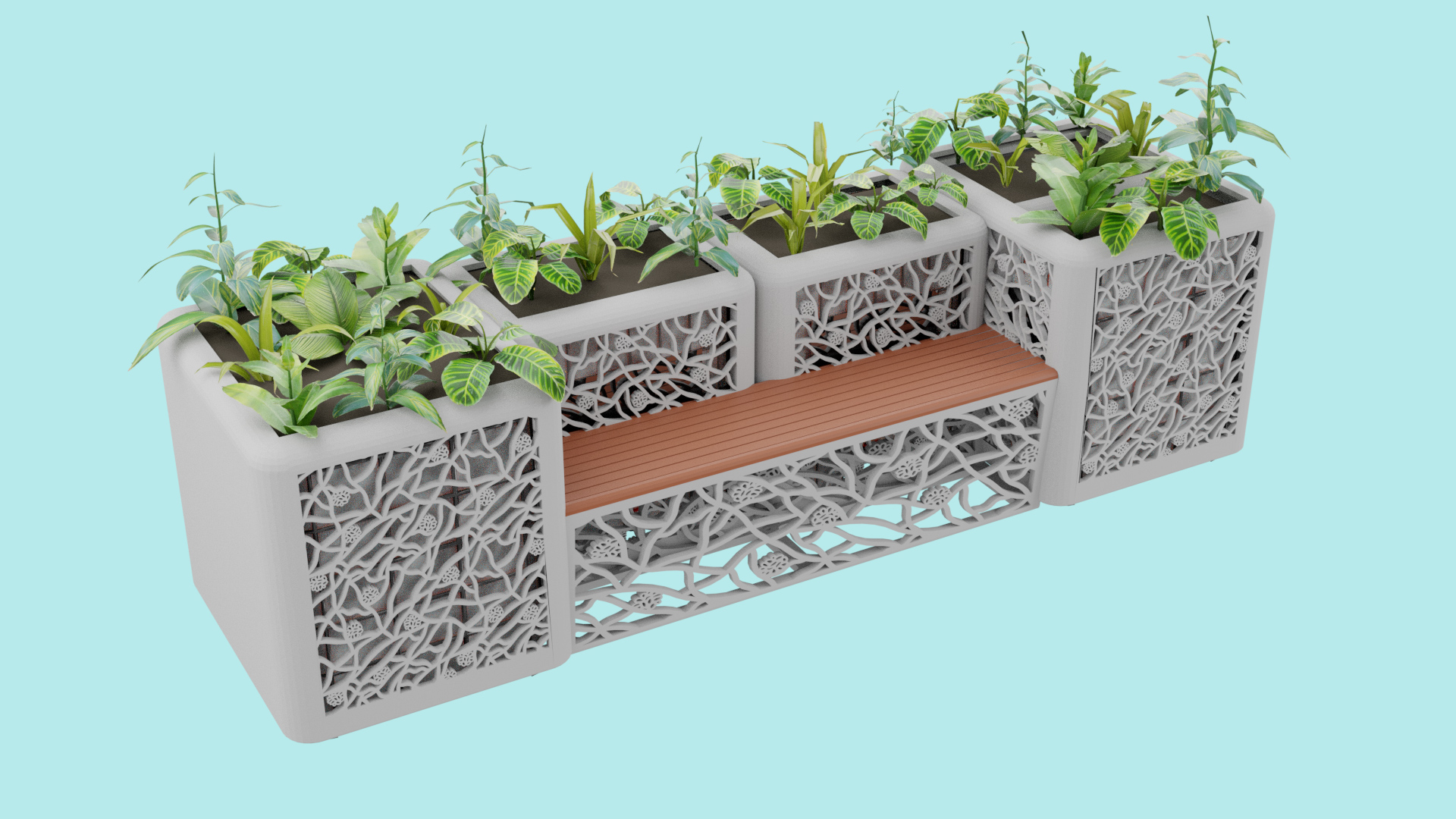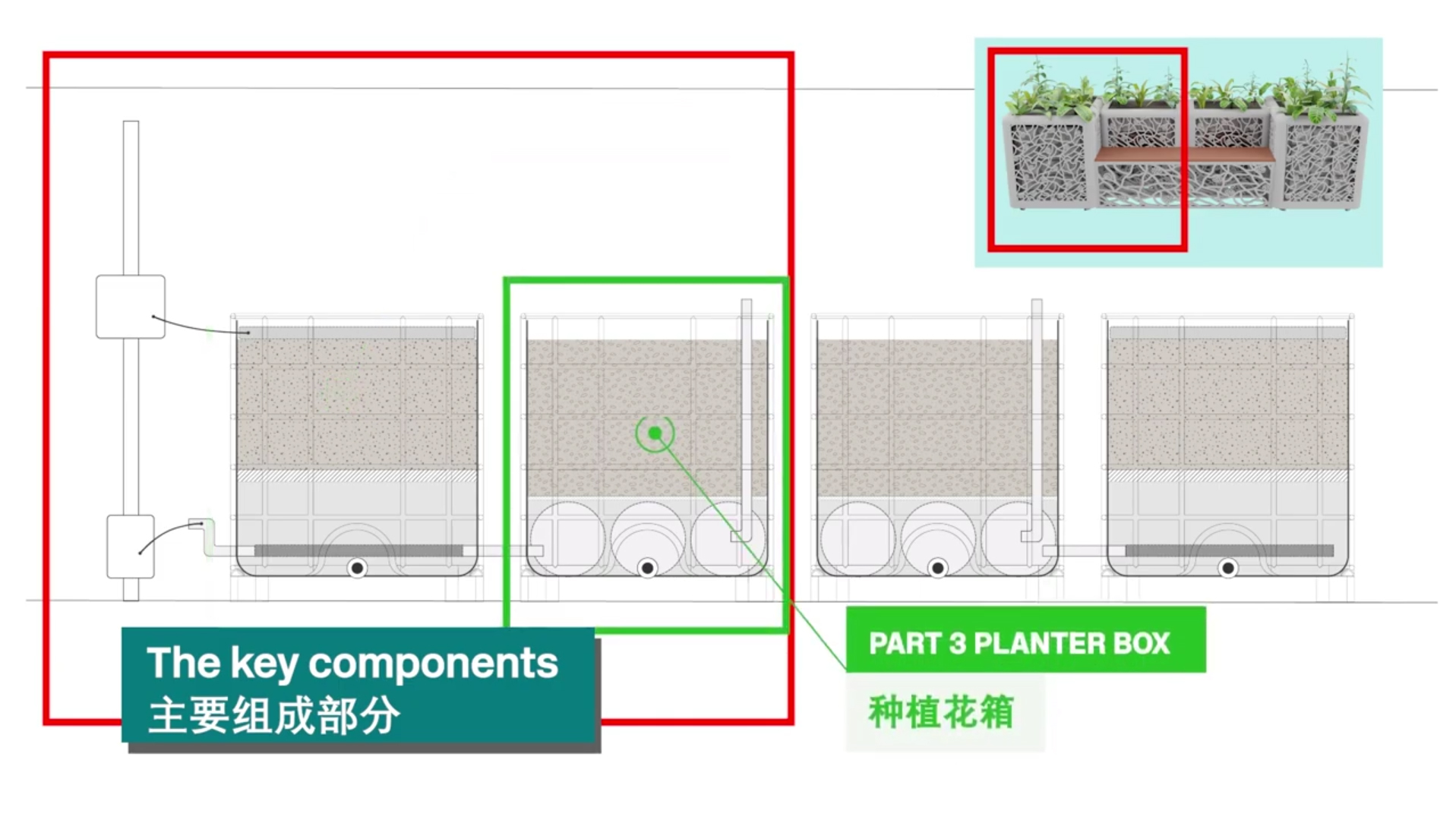Recycled urban waste is improving liveability and sustainability in Kunshan
One of the innovative ideas you’ll hear about at the 5th Water Sensitive Cities Conference is a stormwater planter box made from recycled urban waste that is putting circular economy principles into practice in Kunshan (China).
Developed in conjunction with the Kunshan City Construction, Investment and Development Company (KCID), and SME Associate Coolth Inc., this is the first implemented industrial design project from the CRC for Water Sensitive Cities and the Water Sensitive Cities Institute. Our objective is to demonstrate industrial design can be an integrated platform to embed water sensitive city principles and technologies, and consolidate them into urban furniture, which can be applied widely in dense urban environments as amenities.
The project was developed as part of the Kunshan Urban Metabolism Strategy, which aims to manage different streams of urban wastes in a holistic way, and recycle and synthesise them into industrial design products. In other words, the strategy goes beyond waste-to-resource recycling. And the finished products will be incorporated into the same city, to solve specific problems.
In this case, recycled materials are used to create stormwater planter boxes that recycle waste, manage stormwater, reduce urban heat and beautify the city. The planter box’s outer skin pattern panel is made from recycled HDPE (high density polyethelene), the box is made from used industrial IBC (intermediate bulk containers), and the plants are passively irrigated by stormwater.

The planter box comprises 3 parts:
• part 1 harvests stormwater
• part 2 filters and cleanses the water
• part 3 is the planter box that contains plants.

Watch this short video to find out more about how the planter box works.
The first box has been manufactured and installed at a high school library in Kunshan. We are monitoring its performance, and will apply any lessons to subsequent installations around Kunshan.
We are also looking at opportunities to use the stormwater planter boxes in other locations. For example, we have started discussions on the possibility of introducing them in Bangkok (Thailand), to manage stormwater in the city and green its urban alleys. We are also looking for Australian partners for bespoke application in cities and towns here.
If you have any questions about the planter box, or would like to discuss how it can be applied in your city, please contact our Chief Innovation Officer, Dr Jianbin Wang (wang.jianbin@monash.edu).